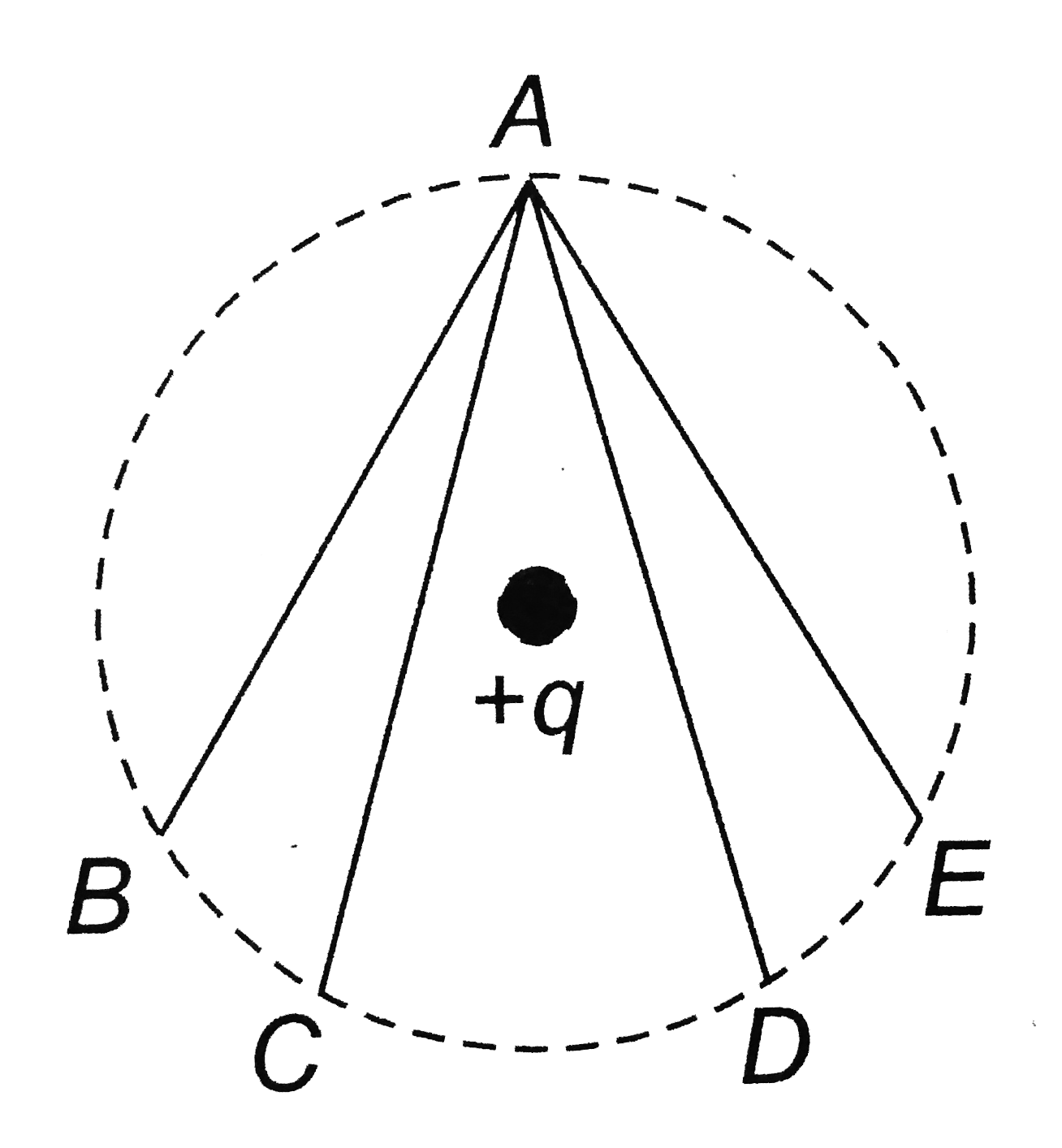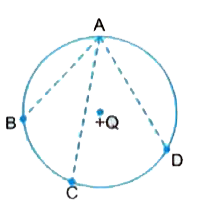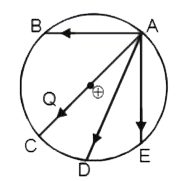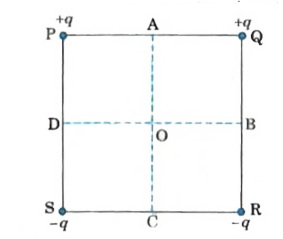In the electric field of a point chargde q, a cetrain charge is carried from point A to B,C,D and E. Then the ork done

Is least along the path AB
Is least along the path AD
Is zero along all the paths AB, AC, AD and AE
Is least along AE
Step by step video & image solution for In the electric field of a point chargde q, a cetrain charge is carried from point A to B, C, D and E. Then the ork done by Physics experts to help you in doubts & scoring excellent marks in Class 12 exams.
Updated on:21/07/2023Topper's Solved these Questions
- ELECTROSTATICS BOOK - ERRORLESS CHAPTER - ELECTROSTATICS EXERCISE - Ordinary Thinking Objective Questions (Electric Dipole)
38 Videos
- ELECTROSTATICS BOOK - ERRORLESS CHAPTER - ELECTROSTATICS EXERCISE - Ordinary Thinking Objective Questions (Electric Flux and Gauss.s Law)
28 Videos
- ELECTROSTATICS BOOK - ERRORLESS CHAPTER - ELECTROSTATICS EXERCISE - Ordinary Thinking Objective Questions (Electric Flux and Gauss.s Law)
28 Videos
- ELECTRONICSBOOK - ERRORLESS CHAPTER - ELECTRONICSEXERCISE - Selv Evaluation Test
23 Videos
- HEATING AND CHEMICAL EFFECT OF CURRENTBOOK - ERRORLESS CHAPTER - HEATING AND CHEMICAL EFFECT OF CURRENTEXERCISE - Self Evaluation Test
14 Videos
Similar Questions
In the electric field of a point charge (+q) , placed at the centre of a circle , a certain test charge is carried from point A to B, C,D and E Least amount of work is done along the path

View SolutionA test charge q is made to move in the electric field of a point charge +Q along a closed path as shown in figure. What is the work done ?

View Solution
Knowledge Check
In the electric field of a point charge Q placed at the centre of a circle, as shown in fingure, a certain test charge q0 is carried from point A to B, C B and D. Then the work done
 Ais least along the path AB.Bis least along the path AC.Cis same along all the three paths AB, AC as well as AD and has a finite value.Dis zero for all the three paths.
Ais least along the path AB.Bis least along the path AC.Cis same along all the three paths AB, AC as well as AD and has a finite value.Dis zero for all the three paths.In the electric field of charge Q, another charge is carried from A to B, A to C, A to D and A to E, then work done will be :
 Aminimum along path ABBminimum along path ADCminimum along path AEDzero along all the paths
Aminimum along path ABBminimum along path ADCminimum along path AEDzero along all the pathsA positive point charge q is carried from a point B to a point A in the electric field of a point charge +Q at O. If the permittivity of free space is ε0, the work done in the process is given by (where a=OA and b=OB) -
AqQ4πε0(1a+1b)BqQ4πε0(1a−1b)CqQ4πε0(1a2−1b2)DqQ4πε0(1a2+1b2)
" Electric field intensity due to a point charge " "q" ' at a distance 'r' from it is "
View SolutionA charge is moved in an electric field of a fixed charge distribution from point A to another point B slowly. The work done by external agent in doing so is 100J . What is the change in potential energy of the charge as it moves from A to B ? What is the work done by the electric field of the charge distribution as the charge moves from A to B ?
View SolutionWhich of the following statement(s) is/are correct? If the electric field due to a point charge varies as r^(-2.5) instead of r^(-2),then the Gauss law will still be valid. The Gauss law can be used to calculate the field distribution around an electric dipole. If he electric field between two point charges is zero somewhere,then the sign of the two charges is the same. The work done by the external force is moving a unit positive charge from point A at potential "V_(A)" to point B at potential "V_(B)" is,(V_(B)-V_(A))
View SolutionIn an uniform electric field of strength E, a charge particle Q moves point A to point B in the direction of the field and back from B to A. Calculate the ratio of the work done by the electric field in taking the charge particle from A to B and from B to A.
View SolutionThere is a, and four charges +q, +q, -q and -q are fixed at the four corners of square. See the figure for the placement of charges.
Calculate:
(i) Electric potential at point O.
(ii) Work done to move a charge +e from point O to point B.
(iii) Work done to move a charge +e from point O to A.

View Solution
